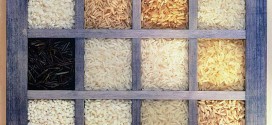Soil erosion – is the process of detachment and displacement of soil particles from land surface. Agencies involved – water, wind, sea waves and animals. 2 broad categories – (i) The Natural erosion or the geologic erosion or the normal erosion; (ii) Accelerated erosion or soil erosion – By soil erosion we mean accelerated soil erosion only.
Reasons (1) Destruction of forests, (2) unscientific cultivation practices, (3) Heavy grazing in pasture and grass lands. Harmful effects – (1) Convert the fertile lands to barren and unproductive, (2) causes frequent floods and diversion of course of flow of rivers through fertile river banks due to deposition of soil in river basins, (3) silting of dams due to deposition of sand and silt.
Types of Erosion – (1) Rainwater erosion includes – splash erosion, sheet erosion, hill erosion and gully erosion – out of these Gully erosion is the most serve for. (2) Land slides erosion – Earthquakes, heavy rainfall, etc., are the major factors – Heavy destruction of forests also (takes places is sloppy and mountainous areas). (3) Stream Bank Erosion – due to torrential rains in hilly areas causes flooding of rivers and streams causing large scale erosion throughout the stream banks. (4) Sea shore erosion – due to turbulent waves in the sea during heavy rains and winds. (5) Wind erosion – in low rainfall areas – due to strong winds – soil particles are deposited on fertile soils of far of places. Causes expansion of deserts to fertile areas. Winds cause movement of soil particle in 3 ways – (i) Saltation, (ii) Suspension, (iii) surface creep.
Saltation – soil particles having a size of between 0.1 to 0.5 mm diameters are directly hit by wind which lead to a bouncing action of the particles- this bouncing action is called Saltation.
Suspension – The soil particles having a size of less than 0.1 mm are carried in suspension and transported to long distances – causing permanent loss of surface soil.
Surface Creep – Soil particles larger than 0.5mm diameter but smaller than 1mm which may not be carried by the Saltation movement, move on the ground surface as a soil creep.
Factors Influencing Erosion
(1) Rainfall,
(2) Wind,
(3) The type of soil,
(4) The slope of the land,
(5) the ground cover and land use pattern
(6) Human factor.
Soil and Water Conservation Measures – Two measures
(1) Agronomic measures,
(2) Engineering of mechanical measures.
Agronomic Measures:
(1) Contour Farming: Cultivation of crops across the slopes – along the contour lines, (2) Strip cropping planting crops in different strips across the slope of land. Alternate strips are to be constituted by erosion resisting and erosion permitting crops (leguminous crops – erosion protecting crops), (3) Stubble Mulching – Mulching with different materials,
(4) Cover cropping – Leguminous crops like Calapagonium, etc can be used.
(5) Alley Cropping Planting of certain erosion resisting crops in hedges at intervals across the slope of the land along the contours-Planting subabul (Leucaena leucocephala) is an effective alley cropping plant.
(6) Crop Rotation – Introducing erosion resisting crops in rotation with erosion permitting crops. Leguminous crops grown in rotation with crops like tapioca, cereals, etc.
(7) Conservation Tillage – Minimum tillage or zero tillage, etc, can be adopted,
(8) Mixed cropping – Helps to protect the soils from the beating action of raindrops.
Mechanical or Engineering measures – To reduce the run off velocity by dividing the lengthy slopes into short compartments. This includes
(1) Basin listing – Making a large number of small basins across the slope along the contour. They act as storage basins for the rainwater and retain it for a fairly long time- increases infiltration and reduces the run off,
(2) sub soiling – the process of breaking the hard pans and impermeable sub-soil layers. Makes the soil more permeable and helps in reducing the runoff and erosion,
(3) Contour bunding – Making narrow and broad based embankments or bunds along the contour lines. Most commonly adopted mechanical soil conservation measure. Since the slope exceeds 33% we have to reinforce the bunds by some means – usually by rubbles and hence known as rubble pitched contour bunding.
(4) Contour Trenching – Trenches are taken along the contour lines – intercept run off of water and thereby prevent water and soil loss – Commonly adopted in coffee gardens of Wayanad.
(5) Terracing – has to be practiced in areas having a slope of more than 10% – Terraces are of different types – channel terraces, graded terraces, diversion type terraces, bench terraces, etc. Bench terraces are taken in areas having slope of even more than 33% – sloppy areas are divided into a large number of platform. They help to retain water, manure, fertiliser, etc. Though initial cost is very high this is the only effective practice that can be followed in steeps slopes.
 Karshika Keralam – A site for Agricultural Enthusiasts
Karshika Keralam – A site for Agricultural Enthusiasts
